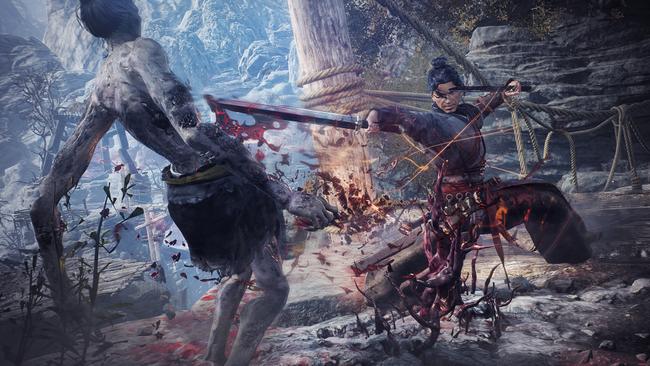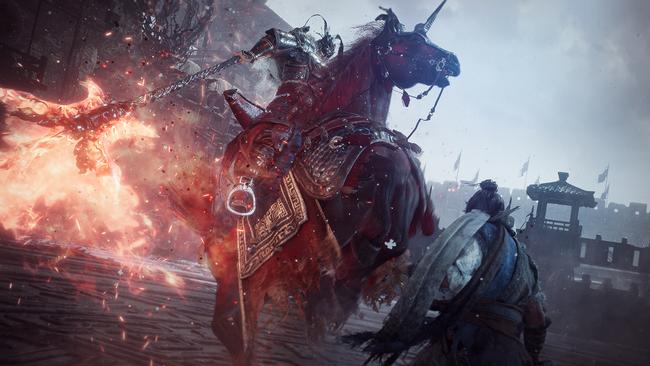
Wo Long: Fallen Dynasty Review
Team Ninja has made a name for themselves with their "Masocore" titles in recent years; games that emulate some of From Software's success with titles like Dark Souls, but with their own twist on the formula; in that sense, Wo Long: Fallen Dynasty is no different. What is different, however, is how it compares to Team Ninja's prior work on Nioh 1 and 2.
Simply put; Wo Long is not Nioh. It might look similar enough, and it does share at least a portion of its DNA with Team Ninja's previous works. Still, there's no guarantee that what you enjoyed about Nioh is present in Wo Long, and the same can be said about what players might have disliked about those games as well. Gone is the Ki Pulse, and multiple stances for players to switch between; while a much higher emphasis on parries, the new Spirit Gauge, and Morale take its place. Instead of a large variety of stats to upgrade, and gear to sift through, Wo Long offers a simplified alternative for players to craft their builds; for players that might have grown accustomed to the customization that Nioh's systems offered, there's a real chance that Wo Long will feel like a downgrade.

I mentioned in my preview that Wo Long feels more akin to Team Ninja's take on Sekiro, and with having more time to sit on my thoughts, I feel like the comparison is especially apt; Sekiro itself could have been compared to From Software's other titles, but it was far fairer to consider it on its own merits. The same can, and should, be said for Wo Long as well. While Wo Long is an Action RPG, much like Nioh, there is far more of a focus on the "Action" than the "RPG"; while aspects such as your level, and your stats, do have a noticeable impact on how well you'll manage in each of the game's levels, what feels far more important is engaging with entirely new systems like Spirit and Morale.
Spirit is a stamina system that acts a bit differently from how players might be used to in other Action RPGs. Taking damage, blocking or dodging attacks, and using Wizardry Spells all consume Spirit, and drag the bar into the orange; filling your bar on the left. Dealing damage and successfully parrying attacks fills the bar to the right. If your bar fills to completion on the left and you get hit, you'll be stunned for a period of time; however, if you have any bar filled to the right of center, your heavy attack can be embued with said Spirit, allowing you to deal heavy damage to an enemy's own Spirit Gauge; limiting its size, and making it easier to stun enemies on your own. If you've played Sekiro, the system itself might sound similar, even if it's decidedly its own thing.
Morale, on the other hand, is a little harder to explain. Put as simply as possible, players start every level at a certain "Morale" level, and both enemies and any bosses for a level will have a Morale level of their own. If your Morale is lower than an enemy's, than you'll take more damage from their attacks, and deal less with your own; you gain Morale for defeating enemies, lose Morale for taking too much damage, and can improve your "base" Morale for a level by raising your Fortitude by finding sections of the map where you can place your Battle Flag.

There are two types of flags that you can place, and each level will have a different number of each that you can place. Larger flags act as checkpoints; much like a bonfire in Dark Souls, or a Shrine in Nioh. You can level up at any of these larger flags, as well as replenish your supply of healing items. Many of these larger flags will be guarded by enemies, which you'll be able to tell by an icon underneath their health bar. Sometimes you'll be required to defeat a miniboss in order to unlock the ability to plant your own flag; some flags will be impossible to miss, lying along the critical path to the boss. Others you might need to search for in a level. Smaller flags are generally the latter and don't act as checkpoints. They will replenish your health when planted, but unlike the larger flags, they won't return any of your healing items.
With each flag planted, the minimum Morale that you can have in a level will go up. In practice, this means that if players are having any trouble with a boss, you'll want to comb through a level to ensure you've planted as many flags as you can. Even just a few morale levels might be the difference you need between struggling with a boss and clearing it with ease. In practice, this means that even more than with Nioh, there's a heavy emphasis on exploring every nook and cranny of a level; it's essential that you find every power boost you can get.

Bosses, for what it's worth, are generally the highlight of the game. Iconic historical characters like Lu Bu are given the imposing presence you would expect, and more bestial enemies offer the same. However, if I had one complaint, it would be that the parry window being so forgiving makes many of the bosses feel too similar to fight; unlike Sekiro, where some attacks you would have to either jump over or dodge into, essentially every attack in Wo Long can - and should - be deflected. With how easy it is to do so, and how there is no downside to parrying attacks, by the end of the game it's easy to feel burnt out from the combat. It also means that, despite whatever differences each weapon type might have, it's hard to shake the feeling that every Wo Long character and build will boil down to feeling too similar in practice.
Ultimately, when I finished Nioh 2, I was more than ready to head into New Game+ after the lengthy campaign. Yet with Wo Long, clocking around half the playtime to reach the credits I had already had my fill. Other aspects, like the state of the game's PC port - unfortunately, this is yet another game plagued by what appears to be the now dreaded shader compilation stutter - certainly contributed to matters, but while Wo Long was certainly worth the time spent finishing it, and a great game in its own right, somehow I doubt I'll be returning to it in the same way as Nioh 2 in the months and years ahead.